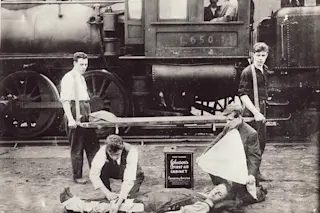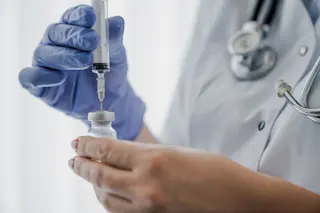For rail workers and passengers of the 19th and early 20th centuries, train travel — while miraculous for the speed with which it carried people across vast distances — presented ghastly dangers. Brakemen commonly lost hands and fingers in the hazardous coupling of cars. Exploding boilers released high-pressure steam that scalded stokers. Passengers were maimed or crushed when trains jumped the tracks, or telescoped into tangles of wreckage. And in the hours they spent aboard, travelers and workers suffered heart attacks, strokes, seizures, all the health hazards of daily life, but far from their family doctor — or sometimes any doctor. One in every 28 railroad employees was injured on the job in 1900 — and 1 in 399 died.
These grim statistics helped spark the development of a new medical specialty during the Victorian Era: railway surgery. Physicians in this field focused on the injuries and maladies specific to ...














